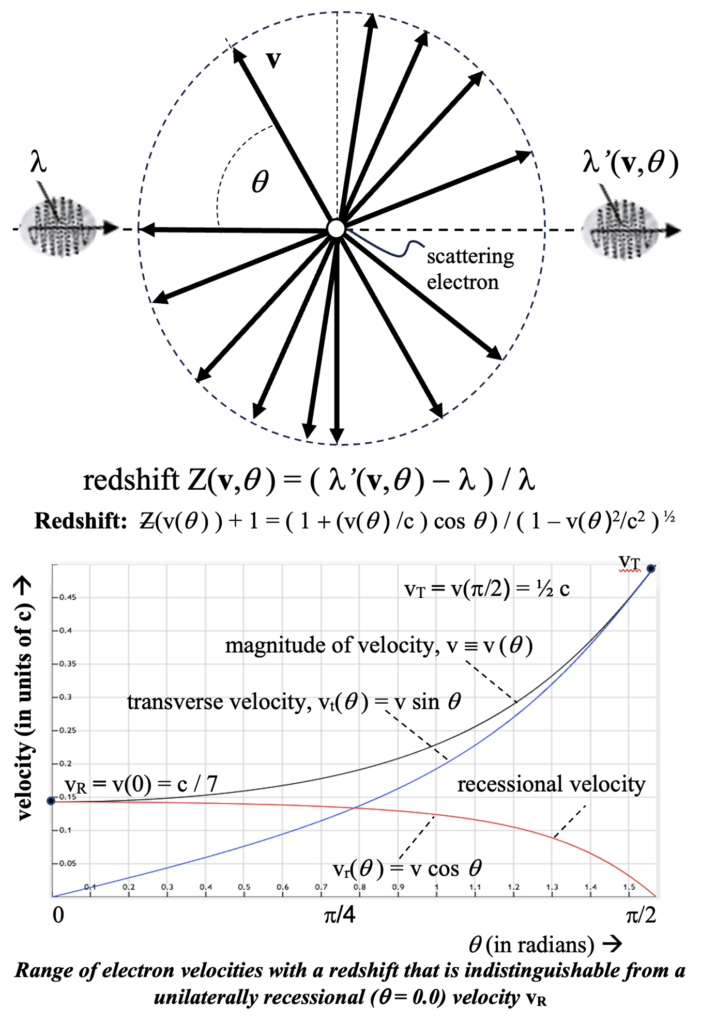All implications of scattering by the intergalactic medium that we have examined thus far have derived primarily from its electron density. Implications of its high temperature – although less dramatic in the sense that they have largely been ignored until now, result in qualitative differences that are unprecedented among all previously discovered scattering phenomena. These effects result directly from the thermal velocities of the plasma electrons that are not inconsiderable with respect to the speed of light, nor are distances traveled by these particles in the time interval of a single extinction.
Radiation emitted from a thermal source exhibits a broadening of the radiation spectra. Secondary radiation is unlike primary thermal radiation in this regard, however, because primary sources generate separate photons that do not interfere with each other but add separately to spectra intensity. In contradistinction, seondary electrons do not emit separate photons, but merely contribute sympathetic oscillating fields to the ‘total’ photon passing over them via constructive interference. Resulting slight variations in lengthened and shortened wavelength of their contribution would at most extend the extinction distance for each canceling photon to form. Detected contributions from each of the receding and approaching electrons in the coherency domain will cancel to within fourth order effects in beta_r, nullifying any net effect. However, there is also a transverse component of relative velocity, beta_t, where beta refers to the ratio of the electrons’ velocity to the speed of light. A transverse component of every electron’s velocity lengthens (i.e., redshifts) the electron’s contribution to the replacement photon. These wavelength effects of the transverse velocity component are small (second order in beta), but they do not cancel because in every case they are positive. They therefore accumulate with each extinction. There is an angular dependence of the transverse velocity of each scattering electron as shown below. The plot provides a comparison of recessional and transverse Doppler effects as a function of the angle to the line of sight of the relative motion.

It is an easily understood, although not previously identified, fact that the impact of large electron velocities on forward scattering would be unilaterally to increase redshift from the associated scattered radiation. This shift is minuscule after a single extinction but the effect occurs to a greater or lesser extent for every scattering electron at each extinction. Although minuscule, they are not negligible since these tiny transverse effects can accumulate appreciably. In fact with increasing numbers of extinction events that occur when light is propagated from more and more remote regions of the universe, this becomes the most significant cosmological fact of all.
In the next post we will derive the relationship of the effect to the electron density and temperature of the medium.
Leave a Reply